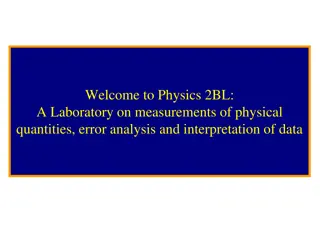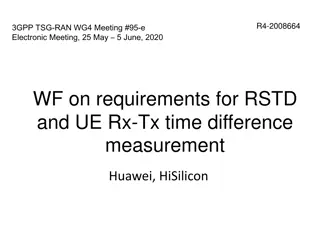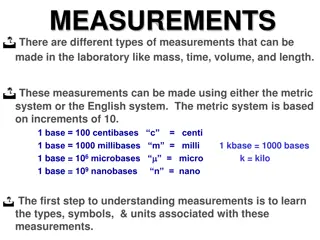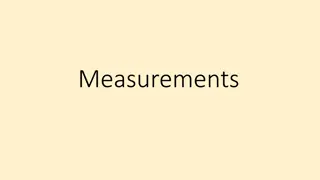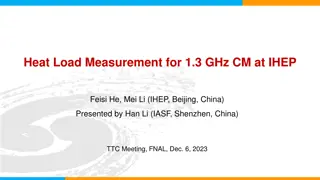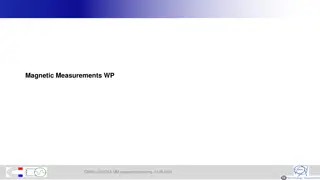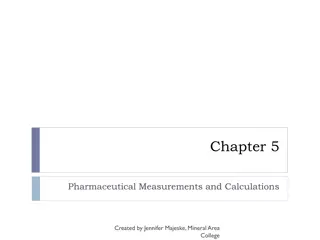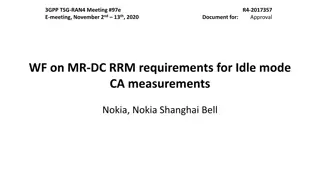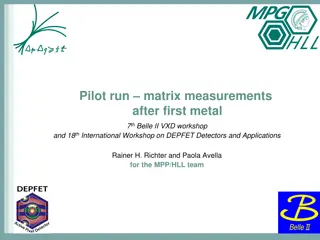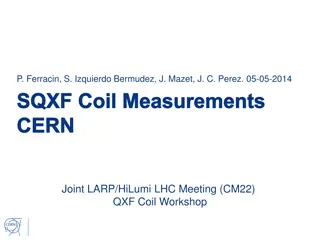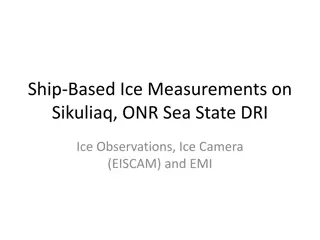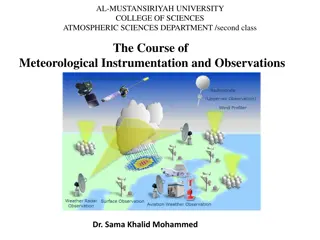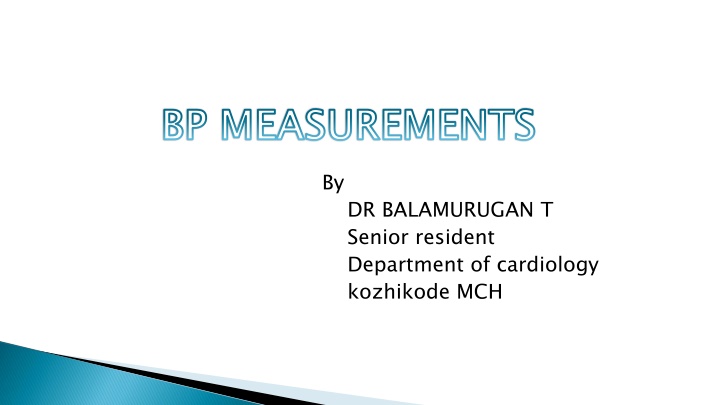
Blood Pressure Guidelines and Measurement Stages
Explore the significance of blood pressure measurements, hypertension definitions, cardiovascular risks associated with high blood pressure, and guidelines for categorizing blood pressure readings into different stages. Learn about optimal blood pressure ranges and the impact of blood pressure control on cardiovascular outcomes.
Download Presentation

Please find below an Image/Link to download the presentation.
The content on the website is provided AS IS for your information and personal use only. It may not be sold, licensed, or shared on other websites without obtaining consent from the author. If you encounter any issues during the download, it is possible that the publisher has removed the file from their server.
You are allowed to download the files provided on this website for personal or commercial use, subject to the condition that they are used lawfully. All files are the property of their respective owners.
The content on the website is provided AS IS for your information and personal use only. It may not be sold, licensed, or shared on other websites without obtaining consent from the author.
E N D
Presentation Transcript
BP MEASUREMENTS BP MEASUREMENTS By DR BALAMURUGAN T Senior resident Department of cardiology kozhikode MCH
Hypertension is defined as office systolic blood pressure (SBP) of 140mmHg or greater, diastolic blood pressure(DBP) of 90 mmHg or greater JNC 7 /ESC 2018 Lewington s et al ,Age specific relevance of BP to vascular mortality; a meta analysis of individual data for on million adults in 61 prospective studies, lancet 2002;360:1903)
The number one risk factor for global disease burden 2010 Most common, readily identifiable, reversible risk factor for Myocardial infarction Stroke Heart failure Atrial fibrillation Aortic dissection Peripheral arterial disease WHO (2015) Global Burden of Disease Study. Lancet 2012;380:2224-60
INTRODUCTION Control of BP significantly cardiovascular complications 10/5 mmHg reduction in BP Average reduction in events (%) All major CV events 20 % All cause- mortality 10-15% Stroke 35% Coronary events 20% Heart failure 40 % CV - cardiovascular Ettehad D et al, Blood pressure lowering for prevention of cardiovascular disease and death, systematic review and meta analysis, Lancet 2016 Thomopoulos c et al ,,Effects of BP lowering on outcome incidence in hypertension,overview meta analysis and meta-regression analysis of randomized trials,j hypertens 2014
STAGE Systolic BP(mmHg) Diastolic BP(mmHg) Normal <120 <80 Pre-hypertensive 120-139 80-89 Grade 1 HTN 140-159 90-99 Grade 2 HTN >160 >100 Of 2 or more readings taken at each of 2 or more visits after initial screening Joint national committee 7
Systolic BP (mmHg) Diastolic BP (mmHg) Normal BP <120 <80 Elevated BP 120-129 <80 Hypertension Stage 2 Stage 1 130-139 80-89 140 90 Isolated systolic HTN <80 130 Isolated diastolic HTN <130 80 (Based on an average of 2 careful readings obtained on 2 occasions) ACA/AHA 2017
Category Systolic BP (mmHg) Diastolic BP (mmHg) Optimal <120 <80 Normal 120-129 80-84 High Normal 130-139 85-89 Grade 1 HTN 140-159 90-99 Grade 2 HTN 160-179 100-109 Grade 3 HTN 180 110 Isolated systolic HTN 140 <90 European society of cardialogy (ESC/ESH) 2018
1.13 billion people world wide 7.5 million deaths (~ 12.8% of the total deaths) 57million DALYS or 3.7% of total DALYS Global prevalence of raised BP in adults 18 years (2015) : Overall - 22.1% Males - 24% Females - 20% DALYS-Disability adjusted life years World health organization-2015 www.WHO.int/gho/ncd/risk_factors/blood_pressure
Prevalence of HTN Global HTN prevalence 22.1 % WHO regions Africa 27.4 % America 17.6 % South east Asia 25.1 % Europe 23.2 % Eastern Mediterranean 26.3 % Western pacific 19.2 % World health organization-2015 www.WHO.int/gho/ncd/risk_factors/blood_pressure
>60 years of age : Prevalence of HTN > 60 % Chow CK et al, prevalence, awareness , treatment and control of hypertension in rural and urban communities in high , middle low income countries JAMA 2013 Burt v et al, prevalence of hypertension in the US adult population : results from the third national health and nutrition examination survey, 1988-1991. hypertension 1995:25:305
Overall prevalence of hypertension in India is 29.8 % 142 articles (of 3047) RURAL URBAN Prevalence of hypertension 27.6% 33.8% Of these, aware of HTN status Being treated 25% 42% 25% 38% Control of BP 10.7%(1/10) 20.2%(1/5) Raghupathy Anchala et al,Hypertension in India; a systematic review and meta analysis of prevalence , awareness and control of hypertension www.jhypertension.com June 2014
BP BP MEASUREMENT MEASUREMENT
MERCURY SPHYGMOMANOMETERS ANEROID SPHYGMOMANOMETERS HYBRID SPHYGMOMANOMETERS OSCILLOMETRIC SPHYGMOMANOMETERS
Based on the amplitude of the oscillations recorded in the lateral walls of the upper arm. Most oscillometric devices estimate BP when the cuff is being deflated, but some devices obtain estimates on inflation. Mean arterial BP is estimated to be the cuff pressure when the oscillation amplitude is maximal, and then the SBP and DBP are computed.
No transducer need to be placed over the brachial artery. Less susceptible to external noise (but not to low frequency mechanical vibration). Main disadvantage is that such recorders do not work well during physical activity when there may be considerable movement artifact
Special BP Measurement Techniques Special BP Measurement Techniques
This technique use an ultrasound transmitter and receiver placed over the brachial artery under a sphygmomanometer cuff. As the cuff is deflated, the movement of the arterial wall at systolic pressure causes a Doppler phase shift in the reflected ultrasound, and diastolic pressure is recorded as the point at which diminution of arterial motion occurs. Patients with very faint Korotkoff sounds placing a Doppler probe over the brachial artery detects the systolic pressure Same technique used for measuring the ankle-brachial index
Principle - unloaded arterial wall. Arterial pulsation in a finger is detected by a photo-plethysmograph under a pressure cuff. The output of the plethysmograph is used to drive a servo-loop, which rapidly changes the cuff pressure to keep the output constant, so that the artery is held in a partially opened state. The oscillations of pressure in the cuff are measured and have been found to resemble the intra-arterial pressure wave in most subjects. Accurate estimate of the changes of systolic and diastolic pressure when compared to brachial artery pressures, Commercially available as the Finometer and Portapres recorders.
Wrist monitors have become popular- ease of use and in obese Limitations 1. Measured only if the sensor is directly over the radial artery 2. Accurate reading only if the wrist is at heart level
Applanation tonometry provides a noninvasive, reproducible, and accurate representation of the aortic pressure waveform and an assessment of the central pulse pressure waveform. Radial artery applanation tonometry performed by placing a handheld tonometer (strain-gauge pressure sensor) over the radial artery The radial artery pressure transmitted from the vessel to the sensor and is recorded digitally. .
A mathematical formula using Fourier analysis permits calculation of central pressure indexes from a peripheral brachial BP and concomitant recording of a pulse pressure wave. SBP and DBP estimated from the shape of the waveform. Major drawback operator dependent, requires trained technician and calibration of peripheral BP recordings, and cumbersome in clinical practice
Mobile health technologies may potentially be an effective means of providing health information, support, and management strategies to promote hypertension self- management. Apps have been developed to measure BP requires validation To date, mobile health BP monitors - poor accuracy compared with oscillometric readings.
New trend in the development of wearable devices that can promote a healthy lifestyle One wrist-based method estimates BP from the pulse transit time Device can also monitor heart rate using an ECG and can measure blood oxygenation This uses Bluetooth for wireless transmission of BP.
4 Approaches to BP measurement 1) Conventional office BP 2) Automated office BP (unattended) 3) Home monitoring (HBPM) 4) Ambulatory BP monitoring (ABPM) Gold standard
PALPATORY METHOD AUSCULTATORY METHOD
Key Steps for Proper BP Measurements Other points to remember 1. SBP by palpatory method 2. Inflate cuff 20 to 30 mmHg above this level 3. Deflate cuff @ 2 mmHg /sec Step 1: Properly prepare the patient Step 2: Use proper technique for BP measurements Step 3: Take the proper measurements needed for diagnosis and treatment of elevated BP/hypertension Step 4: Properly document accurate BP readings. Step 5: Average the readings. Step 6: Provide BP readings to patient ACC 2017/ESC 2018
Oscillometric monitor - unattended for 5 mins 3 readings at 1 min interval with single activation. It is preferred over conventional office BP Minimizes white coat reaction Correlates better with home or awake ambulatory BP AOBP is 15/10 mmHg lower than conventional office BP HTN if AOBP 135/85 mmHg
Procedure : after 5 mins of rest , two readings 1min apart each in the morning and evening for 3 consecutive days ( ideal 7 days) First day s readings discarded All other readings are averaged HTN- if HBPM 135/85 mmHg HBPM improves medication adherence by involving patients in their own medical care. HBPM also can be used to identify patients with white-coat hypertension and masked hypertension.
Oscillometric - preferred measurement method. Some devices can be programmed to take multiple readings with the option of specifying the interval between readings (eg, 1 or 2 minutes). Only devices that can store readings, along with the dates/times they were taken, that can be displayed on the device screen, printed, or transmitted to their healthcare provider should be recommended to patients. Some devices can detect the presence of atrial fibrillation
Assessing for the presence of white-coat hypertension or masked hypertension Monitoring of antihypertensive medication efficacy in treated patients Assessing for white-coat effect Assessing for masked uncontrolled hypertension
ABPM is the gold standard BP- 24hr or 48 hr (better) period while engaged in usual activities including sleep Measurements at 15-30 mins interval , average of at least 14 HTN- Average daytime BP 135/85 mmHg Average night time BP 120/70 mmHg Average 24 hr BP 130/80 mmHg


